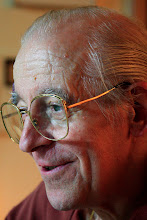Boundary station, otherwise known as the railway station at Torasan (都羅山, 도라산) is just 700 metres from the southern boundary of the Demilitarised Zone (DMZ), a 4 kilometres no-man's land that separates South Korea from North Korea from the Yellow Sea at west to the East Sea ad east. Some 45 kilometres north of the South Korean capital of Seoul, Torasan, it is popularly known as ‘the last South Korean station’, but in a future that many hope to be not so far, it may be known as ‘the first railway station to North Korea’.
Torasan was a small, anonymous and meaningless railway station on the Kyongui Railway Line (京義線, 경의선, Kyonguison) one of the first railroad lines built by the Japanese at the beginning of the last century, connecting Seoul to Pyongyang (平壤, 평양, today the capital of the North Korea) and Sinuiju (新義州, 신의주) on the Yalu (Amnok) River [鴨綠江 (鴨綠江, 압록강)] at the Manchurian border, up to joint the Transiberial and the Europe. Following the Korean War (1950-1953) the Kyongui Railway Line was cut—southern trains terminated at Munsan (汶山邑, 문산읍)—north of Seoul—and northern trains at Kaesong (開城, 개성).

Torasan Raily Station
However, the South-North Declaration made by the 2 Koreas on 15 June 2000, contained among many other things the tentative for the extension of the Kyongui Railway Line to reconnect the 2 countries. Southern passenger service was extended to Torasan and a new track was designed to cross the DMZ. In October 2004, the track was finally built connecting Torasan to Kaesong in North Korea. On 17 May 2007, the first train since the Korean War, carrying North and South Korean delegations, travelled from Munsan in South Korea to Kaesong in North Korea. But the event remained unique. South Korean trains do not reach Kaesong. Torasan is always ‘the last station’ and the quiet looking green North Korean mountains start where Torasan ends.
The station and the mountains are separated by a curtain of barbed-wire and 4 kilometres of no-man's land. But many Koreans hope that in a not so far future, the curtain of barbed-wire will be removed and farmers will begin once again to plough the now no-man's land. The track in Torasan will then take the form of a silk road, connecting Seoul to Pyongyang, Sinuiju, the rest of the Asian Continent and Europe.

Illustration of a train at Torasan passing through the DMZ toward Pyongyang
Every year, thousands of domestic and foreign tourists—the US President George W. Bush (1946- , p.2001-2009) visited it on 20 February 2002—like me today tour this secluded site even if Torasan is no different from many other South Korean railway stations. In fact, it is smaller and less crowded. But the symbolic importance that Torasan holds has made it special and worth visiting. Torasan represents hope for millions of South Koreans who still believe in the unification of their country. At Torasan there is a track whose destination is written as Pyongyang. The glass doors to the track is closed and the waiting room inside is empty. No one gets off from the train arriving from the north and no one is there awaiting the train to Pyongyang. Torasan is ready, but the curtain of barbed-wire and the 4 kilometres of no-man's land still stand, keeping it from happening.
 Guards in front of the track to Pyongyang
Guards in front of the track to Pyongyang
Torasan is a symbol of the pain and suffering that Koreans are going through since the day when the country faced the tragedy of partition. Torasan also tells a silent story of how excessive foreign interference and the hunger for power of political leaders can rip apart nations creating an everlasting deep wound that may never be healed again. Torasan is a lesson for all that people who support and advocate regionalism as a solution to political crises.
Today that the number of South Koreans still believing in the unification of their country is diminishing, it is perhaps idealistic to envisage the two Koreas becoming one in the immediate future, but the possibility of that track at Torasan remains alive as a platform on which the two Koreas can once again write only one history.
Giorgio Olivotto
Photos by Chong Myo-hwa
Seoul, Korea
July 3, 2011


 Guards in front of the track to Pyongyang
Guards in front of the track to Pyongyang
Nessun commento:
Posta un commento